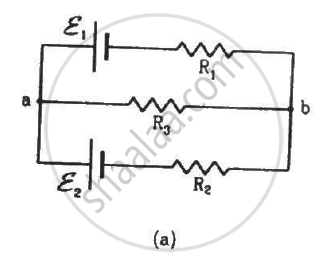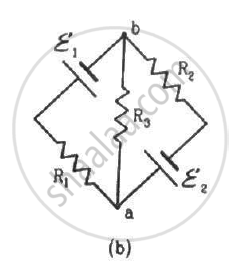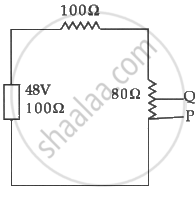Advertisements
Advertisements
प्रश्न
When 5 V potential difference is applied across a wire of length 0.1 m, the drift speed of electrons is 2.5 x 10-4 m/s. If the electron density in the wire is 8 x 1028 m-3, calculate the resistivity of the material of the wire.
उत्तर
The drift speed is
`v_d=I/(`
Now, we know that the current is given from Ohm’s law as
`I=V/R`
`:.v_d = V/`
`:.V/(`
`=>V/(`
Now, resistivity is given as `rho=(RA)/l`
`:.V/(`
`:.rho=5/(8xx10^28xx1.6xx10^(-19)xx2.5xx10^(-4)xx0.1)`
∴ ρ = 1.56 x 10-5 Ωm
APPEARS IN
संबंधित प्रश्न
Describe the working principle of a solar cell. Mention three basic processes involved in the generation of emf.
Why are Si and GaAs preferred materials for solar cells?
The emf of a cell is always greater than its terminal voltage. Why? Give reason.
The current in a conductor and the potential difference across its ends are measured by an ammeter and a voltmeter. The meters draw negligible currents. The ammeter is accurate but the voltmeter has a zero error (that is, it does not read zero when no potential difference is applied). Calculate the zero error if the readings for two different conditions are 1.75 A, 14.4 V and 2.75 A, 22.4 V.
Find the potential difference Va – Vb in the circuits shown in the figure.


A 6-volt battery of negligible internal resistance is connected across a uniform wire AB of length 100 cm. The positive terminal of another battery of emf 4 V and internal resistance 1 Ω is joined to the point A, as shown in the figure. Take the potential at B to be zero. (a) What are the potentials at the points A and C? (b) At which point D of the wire AB, the potential is equal to the potential at C? (c) If the points C and D are connected by a wire, what will be the current through it? (d) If the 4 V battery is replaced by a 7.5 V battery, what would be the answers of parts (a) and (b)?

In the circuit in figure the potential difference across P and Q will be nearest to

Two sources of equal e.m.f are connected to an external resistance R in series. The internal resistance of the two sources are R1 and R2 (R2 > R1) If the potential difference across the source having internal. resistance R2 is zero, then ______.
The terminal potential difference of a cell is greater than its e.m.f when it is ______
